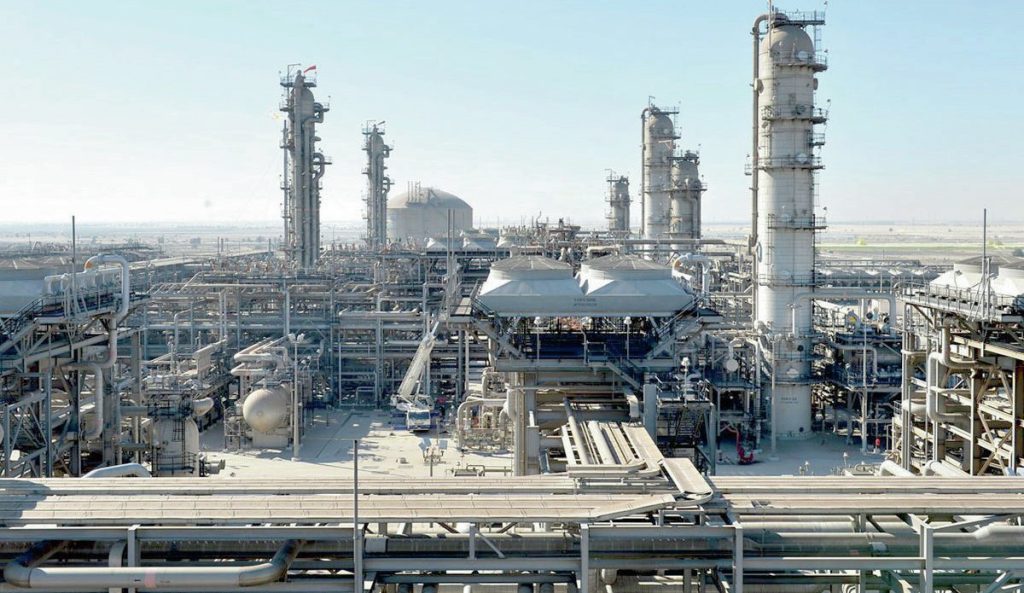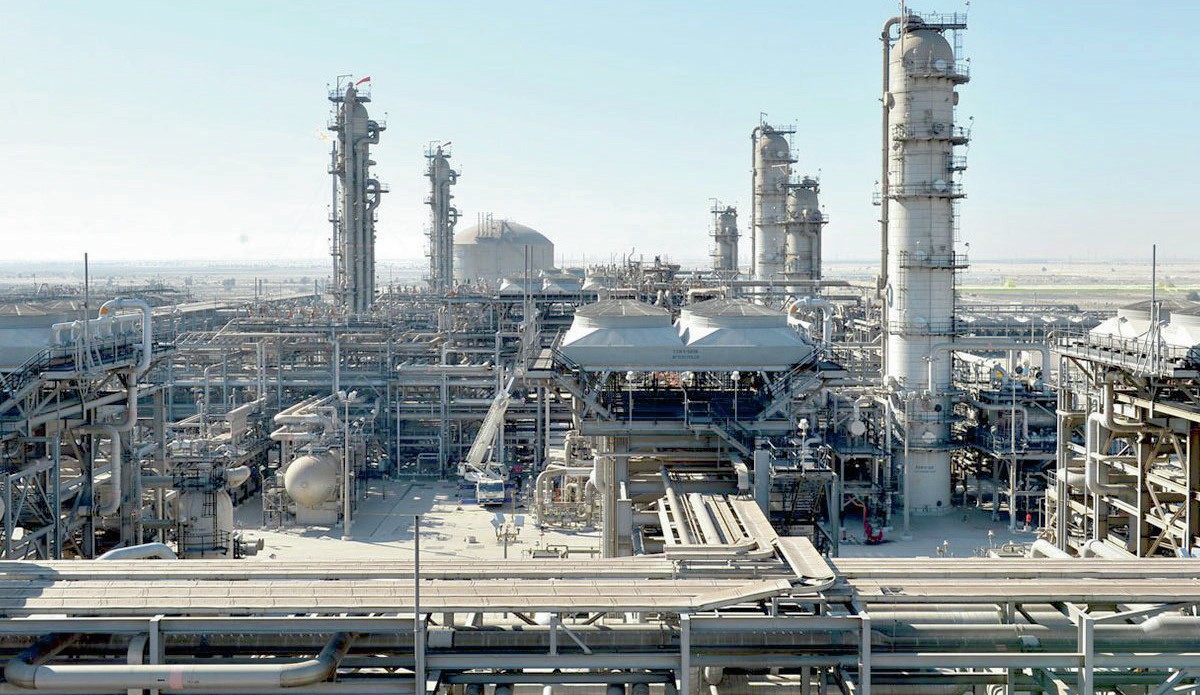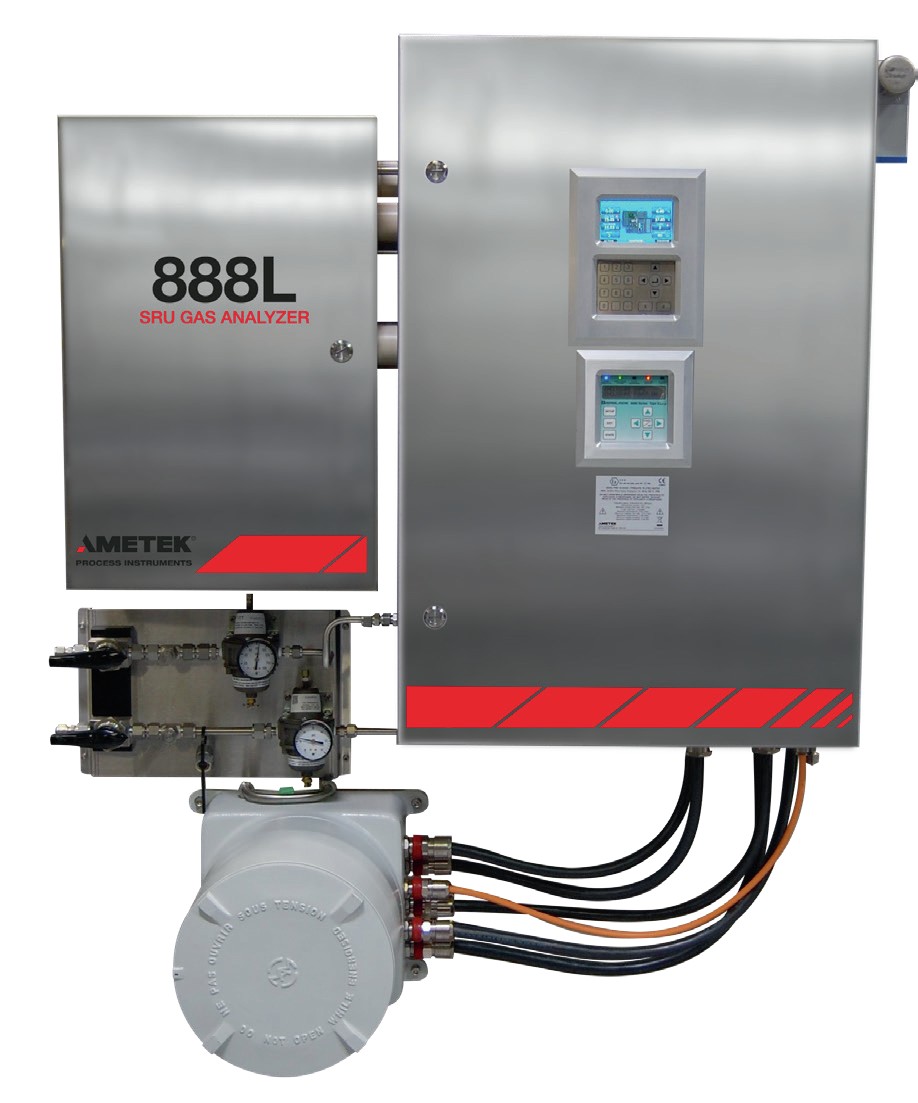Sulphur 408 Sept-Oct 2023

30 September 2023
Sulphur Industry News Roundup
Sulphur Industry News
UNITED ARAB EMIRATES
Shah achieves record output
Following the completion of expansion work on the ultra-sour gas Shah field in May 2023, production has been ramped up. Occidental, which owns 40% of the Shah project and which operates the field in conjunction with ADONC Sour Gas, reported in July that it had achieved record output at Shah, with gross gas sales reaching 722 million scfd in Q2 2023 (equivalent to 1.1 billion scf/d of raw gas, which is 23% H2S and 10% CO 2 ). The expansion has taken processing capacity at Shah to 1.45 billion scf/d and forms part of the UAE’s plans to achieve gas self-sufficiency by the end of the decade. The expansion was conducted by Saipem, who were awarded a $510 million contract in 2021 to expand output from 1.3 billion scf/d to the current 1.45 billion scf/d. Work was completed two months ahead of schedule, according to Occidental.
Tecnicas Reunidas wins Ghasha contract
Técnicas Reunidas and its Emirati partner Target have been awarded a $950 million contract by the Abu Dhabi National Oil Company (ADNOC) as part of the Ghasha concession, the world’s largest offshore sour gas development. The scope of the project consists of the design and execution of the land-side facilities for processing of gas from the Dalma field., including the engineering, procurement and construction of gas conditioning facilities for dehydration, compression and associated utilities on the island of Arzanah, 80 kilo-meters from Abu Dhabi city. The offshore Dalma Gas Development Project is being carried out by a joint venture led by ADNOC 190 km off the northwest coast of the United Arab Emirates. Shareholders in the Ghasha concession include ADNOC (55%), Eni (25%), Wintershall (10%), OMV (5%) and Lukoil (5%).
The Ghasha region consists of several fields with significant gas reserves still under development (Hail, Ghasha, Hair Dalma, Satah, Bu Haseer, Nasr, SARB, Shuwaihat and Mubarraz), which have been identified by ADNOC. The project is expected to be completed in 2025 and will allow the Dalma field to produce some 340 million sscf/d of natural gas.
ADNOC awards $1.3 billion contract for artificial islands
ADNOC has awarded the $1.36 billion dredging, land reclamation and marine construction contract to create several artificial islands in the UAE as part of the first phase of development of the Ghasha concession. The contract has been awarded to UAE’s National Marine Dredging Company (NMDC). NMDC is now to construct 10 new artificial islands and two causeways, as well as expand an existing island, Al Ghaf. In total, the project is slated to take around 3 years.
Dr Sultan Ahmad Al Jaber, Minister of State and ADNOC Group CEO, said: “This award accelerates the development of the Hail, Ghasha and Dalma sour gas offshore mega-project, which is an integral part of ADNOC’s 2030 smart growth strategy. As one of the world’s largest sour gas projects it will make a significant contribution to the UAE’s objective to become gas self-sufficient and transition to a potential net gas exporter.”
UNITED KINGDOM
Fluor wins contract for SAF production
Fluor has been awarded a contract by LanzaTech UK Ltd to provide front-end engineering and design (FEED) services a commercial sustainable aviation fuel (SAF) plant in Port Talbot, Wales. Fluor will help advance LanzaTech’s Project DRAGON – a play on the Welsh national symbol, which stands for Decarbonising and Reimagining Aviation for the Goal of Net zero – to convert locally derived waste gases to ethanol. The ethanol will be converted into SAF, meeting the UK government’s mandate that at least 10% of jet fuel should be made from sustainable feedstock by 2030.
“Decarbonising aviation fuel will aid the aviation industry in meeting its net zero carbon emission goals,” said Jim Breuer, group president of Fluor’s Energy Solutions business. “We are confident that Fluor’s renewable fuels expertise, paired with LanzaTech’s carbon capture and utilisation technology, can help accelerate the energy transition in this important sector.”
SAUDI ARABIA
Aramco evaluating proposals for tail gas treatment
Saudi Aramco has reportedly received bids from two consortia for its programme of upgrading sulphur recovery units at its gas processing plants and is currently evaulating them. Aramco invited expressions of interest in October 2021 for the programme, which aims to bring sulphur recovery at seven gas processing plants up to 99.9% using tail gas treatment units. Proposals for the programme had initially been asked for in September 2022, but this was later extended several times to May 2023. The programme must also bring SO2 emissions from the gas plants in line with regulations set by the country’s Environment, Water & Agriculture Ministry which set maximum SO2 emissions from stationary sources at 250 ppmv (dry and 0 per cent oxygen basis). The gas plants involved are: Berri, Haradh, Hawiyah, Khursaniyah, Shedgum, Uthmaniyah and Wasit. The treatment facilities are being offered on a public-private partnership basis, either build-own-operate or build-ownoperate-transfer. The two consortia who have submitted bids are reported to be: India’s Larsen & Toubro Energy, with Saudi partner Vision Invest, and a consortium consisting of Hynudai, Enerflex, Broofield, Korea Overseas Infrastructure and Urban Development Corporation and the Export-Import Bank of China. The project is scheduled for completion by 2027.

WORLD
Most new refinery capacity in Asia and Africa
Asia continues to dominate global refinery fluid catalytic cracking unit (FCCU) capacity additions by 2027, according to GlobalData. The continent will be responsible for around 58% of total capacity additions by 2027. This represents a total FCCU capacity addition of 1.83 million bbl/d. Of this, 1.4 million bbl/d is likely to be from new-build refineries while the rest is from the expansion of existing refineries. Within that figure, China is expected to add the highest capacity, with an additional 513,000 bbl/d from seven refineries over the period 20232027. India is next with 388,000 bbl/d of capacity additions during the same period.
Vadinar refinery, located in India, is the largest upcoming FCCU project in the region and is likely to add 187,000 bbl/d 2024. Nayara Energy Ltd, the operator of the Vadinar refinery, is expanding the cracker as part of the company’s plans to diversify its petrochemicals portfolio and meet the growing demand for polypropylene in India.
The Middle East is another significant contributor to global FCCU capacity additions, accounting for 16.8% of additions by 2027, with Iraq is likely to account for most of the capacity additions of 308,000 bbl/d of capacity. Africa follows closely at 16.7%. Here the Lagos I refinery expansion in Nigeria is expected to add the highest capacity addition of 163,000 bbl/d by 2027. Akwa Ibom III, Port Sudan III, and Lobito are the other major upcoming projects with 50,000 bbl/d of FCC capacity expected to be added in each of the refineries during 2023–2027.

DENMARK
Joint venture to accelerate global SAF production
Topsoe and Sasol have signed an agreement to establish a 50/50 joint venture to accelerate their joint commitment to produce sustainable aviation fuels (SAF). The aviation sector contributes 2-3% of global carbon emissions and sustainable aviation fuels are in demand for decarbonising air transport by industry and regulators alike. The partners say that the joint venture will go beyond their combination of technologies, capabilities and industry experience in the scaling up of sustainable aviation fuel production. It will develop, build, own, and operate sustainable aviation fuel plants, and market sustainable aviation fuels derived primarily from non-fossil feedstock, using green hydrogen, sustainable sources of CO2 and/or biomass with a specific focus on Sasol’s Fischer-Tropsch and Topsoe’s related technologies.
Fleetwood Grobler, Sasol president and CEO, highlighted the long-term ambitions of Sasol in sustainable aviation fuel, stating: “Sasol is delighted to join forces with Topsoe, furthering our global sustainable aviation fuel aspiration. This is an important milestone in advancing our long-term strategy to become net zero by 2050.”
Roeland Baan, CEO at Topsoe, added: “As part of our proven partnership, this future business is an important moment of progress at a critical time. We need to keep the world open by creating more sustainable ways of flying, and our shared commitment to accelerating sustainable aviation fuels is a vital part of this. We believe no one is better placed than the company formed by Sasol and Topsoe to deliver the means to scale SAF production”.
UNITED STATES
Sulphur recovery analyser
AMETEK Process Instruments has introduced a new sulphur recovery tail gas analyser, the 888L. The company says that it is suitable for end users and end use locations that require the analyser electronics and user interface to be located away from the sampling location. Using smart diagnostics, customers can communicate and react to process trends and problems from a location remote from the sample point. It takes advantage of proven measurement technology, operational hardware and diagnostic software from the existing AMETEK 888 air demand analyser to provide reliable performance, with minimal downtime. It can be installed in a wide range of ambient conditions and temperatures of up to 60°C (140°F). If mounting an analyser at the sample point is restricted due to physical limitations, or if the decision is to mount the user interface and analytical hardware in a protected enclosure, its demister probe can be installed at the sample point, allowing heated sample lines to transport the process sample gas to measurement cell.





